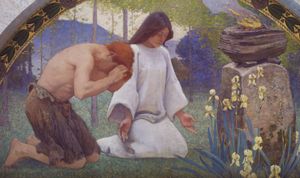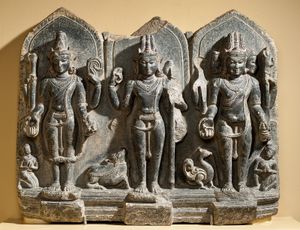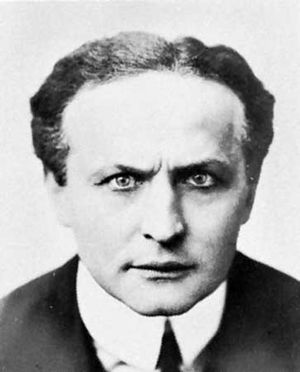spirit
Learn about this topic in these articles:
implications for
- burial rites
- In inheritance: Inheritance and individual ownership of property

…with the belief that the spirits of the slaughtered goats would follow the dead owner into the realm of spirits, where he would need them. Belief in providing for the needs of the dead seems to have been the root of the widespread custom of burying with the body or…
Read More
- use of masks
- In mask: General characteristics

The localization of a particular spirit in a specific mask must be considered a highly significant reason for its existence. In masks worn for socially significant rituals, the change in identity of the wearer for that of the mask is vital, for if the spirit represented does not reside in…
Read More - In mask: Social and religious uses

They often represent supernatural spirits as well as ancestors and therefore have both a religious and a social significance.
Read More
place in
Oceanic religions
- Melanesian cultures
- In Oceanic music and dance: Melanesia
…the dancer impersonates mythical or ancestral beings; the dancer-actor becomes someone else, and his attire is usually distinctly unhuman or supernatural—consisting often of huge masks and a full otherworldly costume. The dance movements are dictated by the two considerations that the impersonated beings are not human and that the dancer’s…
Read More - In Melanesian culture: Religion

…with ancestral ghosts and other spirits participating in everyday social life. Human effort in the uncertain projects of war, food production, and the pursuit of prestige was thought to succeed only when complemented by support from invisible beings and forces, which were manipulated by magical formulas and elicited through prayer…
Read More
- In Oceanic music and dance: Melanesia
- Micronesian cultures
- In Micronesian culture: Religion

…gods, a large number of spirits attached to specific localities or performing specific functions, and a number of ancestors and deceased neighbours who could sometimes make contact with their living descendants and friends. Practices associated with each of these three major categories of supernatural beings tended to be distinct and…
Read More
- African cultures
- In African dance: The religious context

…there is continuous interaction between spiritual forces and the community. Spiritual beings may inhabit natural elements or animals and may also take possession of human mediums. This possession of persons is usually temporary and confined to ritual, as when the priest of the Yoruba god Shango dances into a state…
Read More
- Hegelianism
- In Georg Wilhelm Friedrich Hegel: Emancipation from Kantianism of Georg Wilhelm Friedrich Hegel

…is only because humans are spirit that they can grasp and comprehend the Spirit of God. Hegel works out this conception in an exegesis of passages in the Gospel According to John. The kingdom, however, can never be realized in this world: humans are not spirit alone but flesh also.…
Read More - In classification of religions: Philosophical

…played in the self-realization of Spirit. The historical religions fall into three great divisions, corresponding with the stages of the dialectical progression. At the lowest level of development, according to Hegel, are the religions of nature, or religions based principally upon the immediate consciousness deriving from sense experience. They include:…
Read More
- huaca belief
- In huaca
” Huaca also means spirits that either inhabit or actually are physical phenomena such as waterfalls, mountains, or man-made shrines. The aforementioned shrines, which are found throughout the Inca territory from Ecuador to Chile, may be as simple as stones piled in a field (apachitas) or as complex as…
Read More
- In huaca
- Northwest Coast Indian culture
- In Northwest Coast Indian: Religion and the performing arts

…seeking individual contact with a spirit-being, usually through prayer and a vision. Among Coast Salish all success in life—whether in hunting, woodworking, accumulating wealth, military ventures, or magic—was bestowed by spirit-beings encountered in the vision quest. From these entities each person acquired songs, special regalia, and dances. Collectively, the dances…
Read More
- polytheism
- In polytheism: The nature of polytheism

…belief in many animae (“spirits”) and is often used rather crudely to characterize so-called primitive religions. In evolutionary hypotheses about the development of religion that were particularly fashionable among Western scholars in the latter half of the 19th century, animism was regarded as a stage in which the forces…
Read More
- shamanism
- In shamanism: Classic shamanism

…society in dealing with the spirit world. A given shaman is usually known for certain mental characteristics, such as an intuitive, sensitive, mercurial, or eccentric personality, which may be accompanied by some physical defect, such as lameness, an extra finger or toe, or more than the normal complement of teeth.…
Read More
- South American nomad cultures
- In South American nomad: Religion

…in good and evil bush spirits.
Read More
- South American tropical forest cultures
- In South American forest Indian: Belief and aesthetic systems

…his soul becomes an auxiliary spirit of his living colleagues, helping them in their curing practices and in the control of harmful spirits; among the Rucuyen, the bodies of common individuals were cremated, while that of the shaman was kept in a special place so that his soul might live…
Read More
- spiritualism
- In spiritualism

…have the ability to contact spirits directly. Some mediums worked while in a trancelike state, and some claimed to be the catalyst for various paranormal physical phenomena (including the materializing or moving of objects) through which the spirits announced their presence.
Read More
- witchcraft
- In witchcraft: The witch hunts

…maleficium was trafficking with evil spirits. In the Near East—in ancient Mesopotamia, Syria, Canaan, and Palestine—belief in the existence of evil spirits was universal, so that both religion and magic were thought to be needed to appease, offer protection from, or manipulate these spirits. In Greco-Roman civilization, Dionysiac worship included…
Read More







